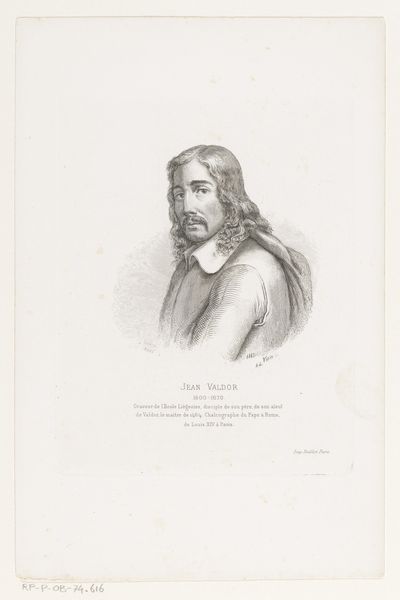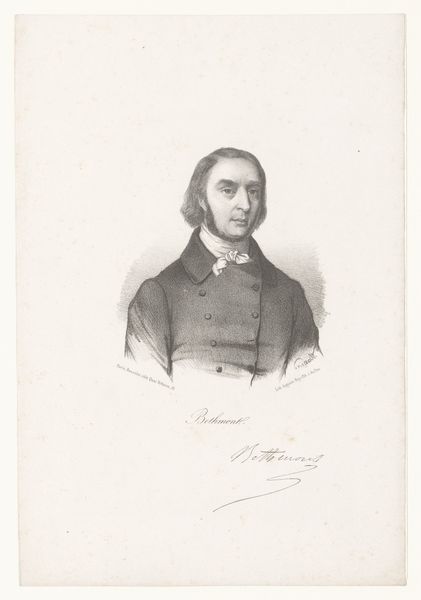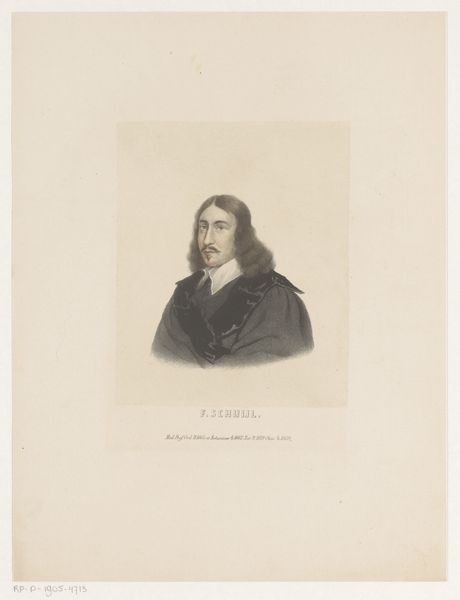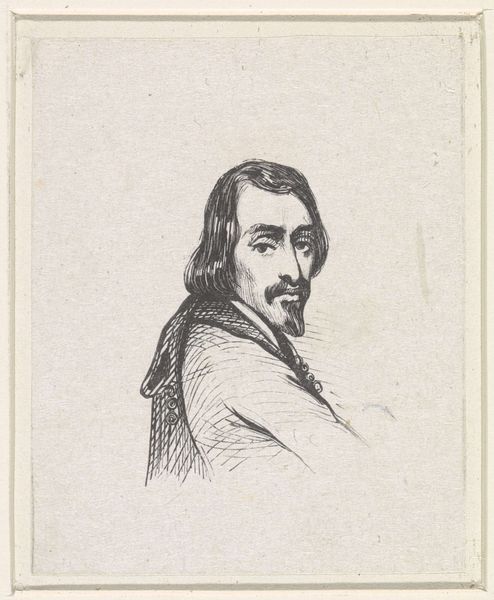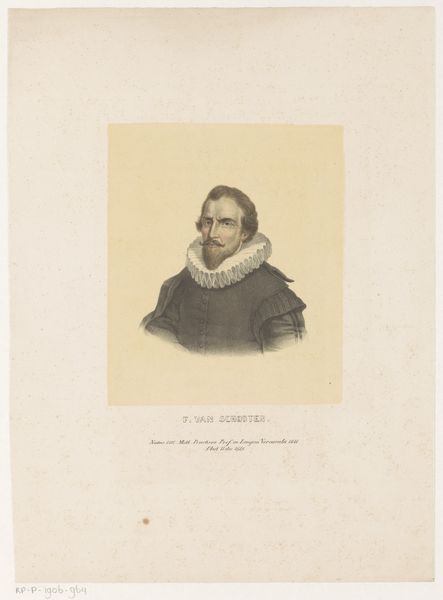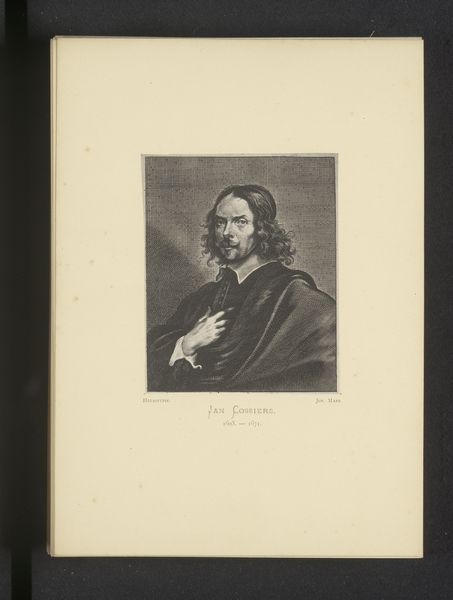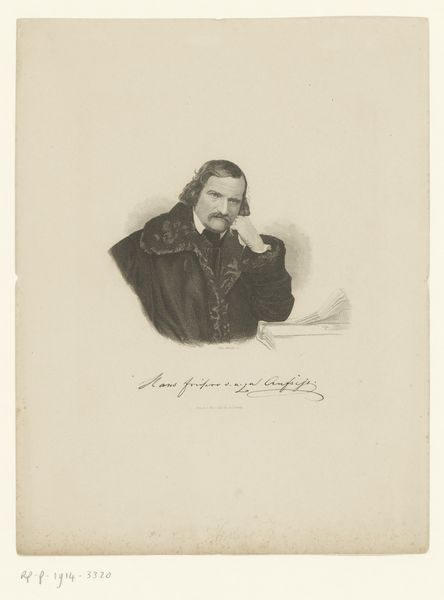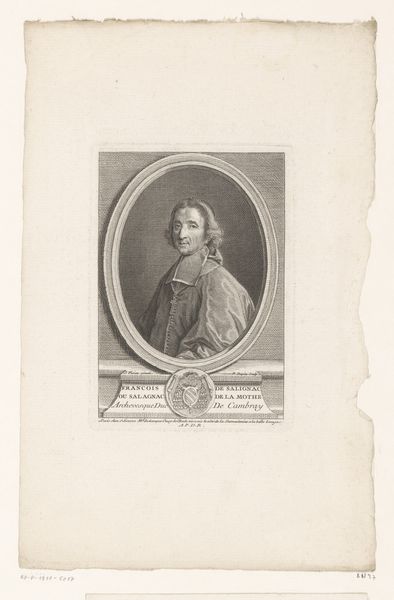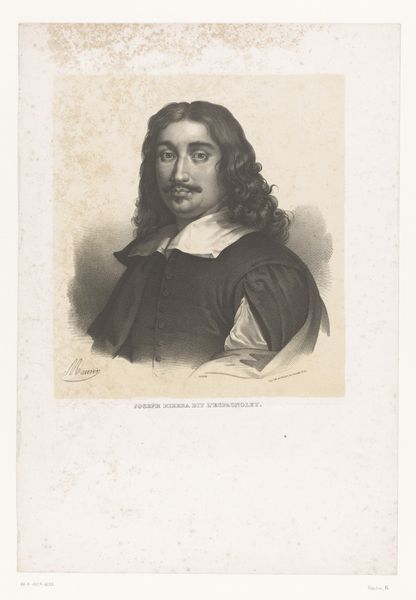
lithograph, print
#
portrait
#
16_19th-century
#
lithograph
# print
#
pencil sketch
#
history-painting
#
realism
Dimensions: height 383 mm, width 298 mm
Copyright: Rijks Museum: Open Domain
Editor: So, this is the "Portret van Felix Bovie," a lithograph by Joseph Schubert from 1842, currently residing at the Rijksmuseum. It’s… well, it’s a portrait! The monochrome tones give it this gentle, almost dreamy quality, but the subject’s intense gaze is quite striking. What do you see in this piece, what stands out to you? Curator: It whispers tales, doesn't it? I find myself drawn to the almost photographic realism, softened by the touch of the lithographer's hand. Consider the year – 1842. Photography was still nascent. Lithography offered a readily reproducible, and thus more widely accessible, "true" image. This portrait, in its subtle way, champions a bourgeoning democratization of representation. The sitter, Felix Bovie, looks out at us with the quiet confidence perhaps afforded by such shifts. He seems aware of his own presence, his place in a changing world. Don't you think? Editor: I hadn’t considered it like that. So, lithography wasn't just about making art, but also about making images more available to a broader audience? That adds a whole other layer to it. The detail, particularly in his face, is quite remarkable for a print, and now I can see that pushing through. I wonder what Felix Bovie was involved with; there’s a sense of forward-thinking and openness there. Curator: Precisely! It encourages me to ask, “Who was he?" and by extension “Who gets remembered?". What's been your favourite revelation, that we can share to engage with listeners? Editor: Realizing that the choice of lithography itself tells a story about accessibility and the changing landscape of representation at the time! It wasn't just about creating a portrait; it was about making it seen more broadly. Curator: Marvelous! Each print whispers tales if we listen closely enough.
Comments
No comments
Be the first to comment and join the conversation on the ultimate creative platform.
